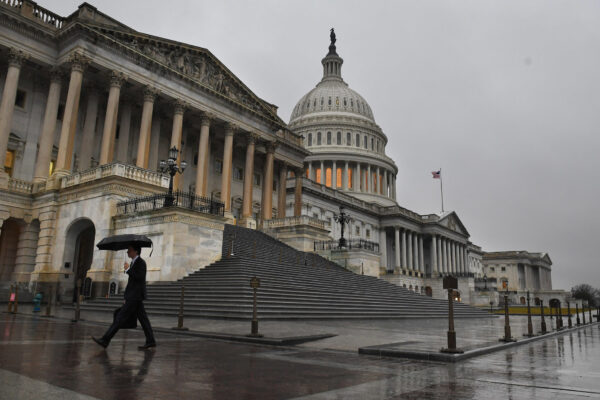Making it easy for students and families to apply for federal student aid is a little like the Holy Grail—universally sought for its extraordinary value, but never found.
And if recent discussions in Washington are any indication, the search likely will intensify as Congress works to reauthorize the Higher Education Act.
At issue is the FAFSA, the form that students and families must fill out to get federal student aid. The FAFSA dates to the 1992 Higher Education Act reauthorization, when Sen. Claiborne Pell (D-RI) insisted on a single free and streamlined application that would make it as simple as possible for individuals to get federal grants, loans, and campus-based aid. Colleges and universities can require families to fill out additional documents for institutional student aid, most commonly the College Scholarship Service’s “PROFILE,” but the vast majority (including nearly nine out of 10 private not-for-profit institutions) only require the FAFSA.
Initially, all students completed a paper form. In the mid-1990s, the Department of Education made it possible for students to apply online, and today more than 99 percent of all applicants—roughly 19 million people—submit it electronically. The nearly obsolete paper version of the FAFSA now includes 108 numbered questions, though several questions may elicit multiple answers, resulting in a total of 142 possible responses. The “skip logic” of the online questionnaire cuts down the number for most people, but the average applicant still faces 61 questions.
Even a quick look illustrates the complexity that students and families face. The paper version itself is six pages plus four pages of instructions. The low- and lower-middle income families who tackle the FAFSA will find it exponentially more complex than the 1040A or 1040EZ tax documents that most of them complete.
A more careful look raises a whole host of questions. Why is it necessary to ask applicants their state of residence three times? (Answer: Basic contact information, the expected family contribution formula requirement, and skip tracing.) Why does the FAFSA ask about drug convictions and Selective Service registration? (Answer: Not having a conviction and being registered are required to get federal student aid, even though few students are affected.) Why does the federal government need to know a student’s driver’s license number? (Answer: In case the student gets a federal student loan and defaults on it at some future point.) Why do we ask whether the student is a “first-generation student”? (Answer: California wants to know.)
In short, every question on the FAFSA is there because it is required by federal law or because states want to know as a condition for distributing their own student aid money. Why allow states to ask questions on a federal form? Because otherise states might require students and families to fill out a separate application and thus add to the complexity they face. So the effort to have a single document means that at least some students must answer more questions than would otherwise be the case.
Most higher education policy analysts who have studied the FAFSA closely believe that its sheer complexity and detail discourages many applicants from even applying for federal student aid and derails their participation in postsecondary education. According to student financial aid expert Mark Kantrowitz, 2011–12 federal data show that about 2 million students who qualified for a federal Pell Grant did not file a FAFSA. How many of them were deterred by the length and complexity of the FAFSA is unknown, but most likely it is a considerable number.
Not surprisingly, simplifying the FAFSA has become a rallying cry for individuals and groups who want to boost college participation. And in its proposed fiscal 2016 budget, the Obama administration recommended deleting several dozen questions that it said are the most burdensome and difficult to verify. Such a move, which would reduce the application’s length by more than a third, would be a significant step toward simplification.
But the single most visible and articulate voice for streamlining the FAFSA is Sen. Lamar Alexander (R-TN), the former president of the University of Tennessee and U.S. secretary of education who chairs the Senate Committee on Health, Education, Labor, and Pensions. Alexander is fond of unfolding the application in public speeches to provide a dramatic illustration of the form’s length—four-and-a-half feet—and complexity. The senator envisions a radically simplified version: He wants to slash the current 108 questions to just two. Under his plan, applicants would be asked only for their adjusted gross income and number of family members. The entire form would fit on a postcard.
It’s an appealing goal, and one, according to experts, that would be sufficiently accurate for determining eligibility.
So what’s not to like?
There are two arguments against simplification.
First, it costs money. The FAFSA is designed to identify the family income and resources that can be used to pay for a college education. The more questions that are asked, the more accurate the information becomes. Using a postcard-length FAFSA, families that want to game the system by putting resources where they are not counted against aid eligibility would be able to do so without much difficulty. Eliminating a few questions may not make much of a difference in program costs. But striking a large number could increase the cost of federal student aid programs considerably, though as of early March, the Congressional Budget Office had not yet released a cost estimate for Alexander’s proposal.
Second, reducing the length of the FAFSA will affect the behavior of states and institutions. If a simplified FAFSA increases the cost of state and institutional student aid programs, some states and institutions will no longer rely exclusively on the federal application. If that happens, they are likely to require students to fill out an additional form, and in some cases pay a fee to cover processing costs. Nobody knows—or even has a good guess—about how many institutions and states will take such a step, but some surely will.
The bottom line is that there are trade-offs to simplifying the FAFSA. This does not mean the drive for simplification will falter—the idea is analytically sound and enjoys bipartisan support. But it means that in thinking about how far to go in making changes, policymakers will have to weigh competing priorities. Ultimately, simplification may well come down to a question-by-question analysis of the value of every single item currently on the form.
FAFSA simplification, it turns out, is pretty complicated.
Reprinted from the summer 2015 edition of ACE’s flagship magazine, The Presidency.
If you have any questions or comments about this blog post, please contact us.



